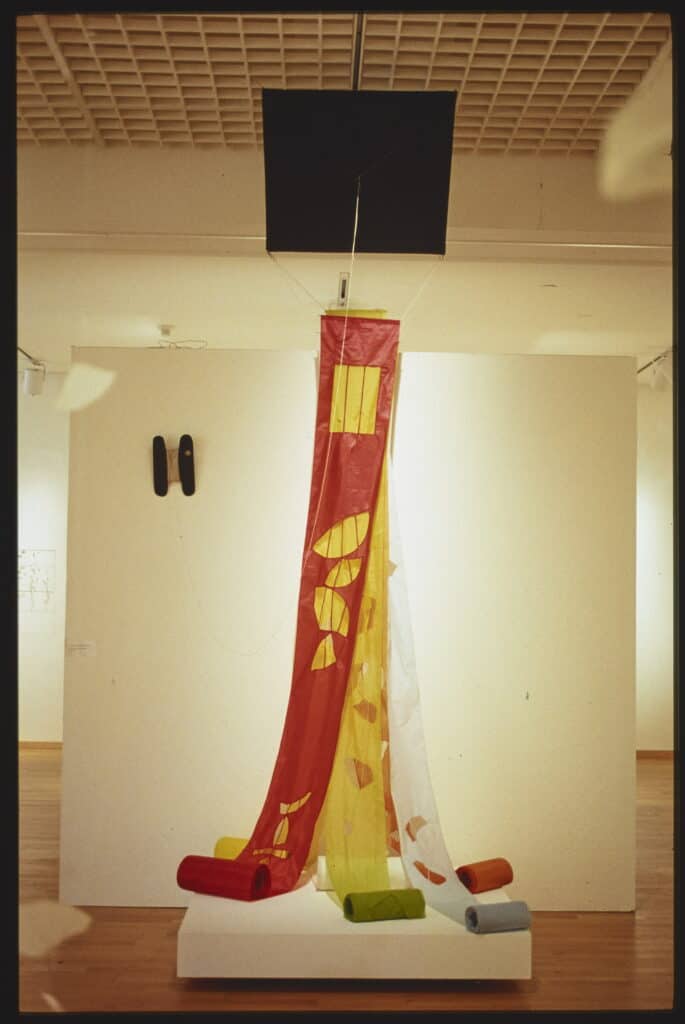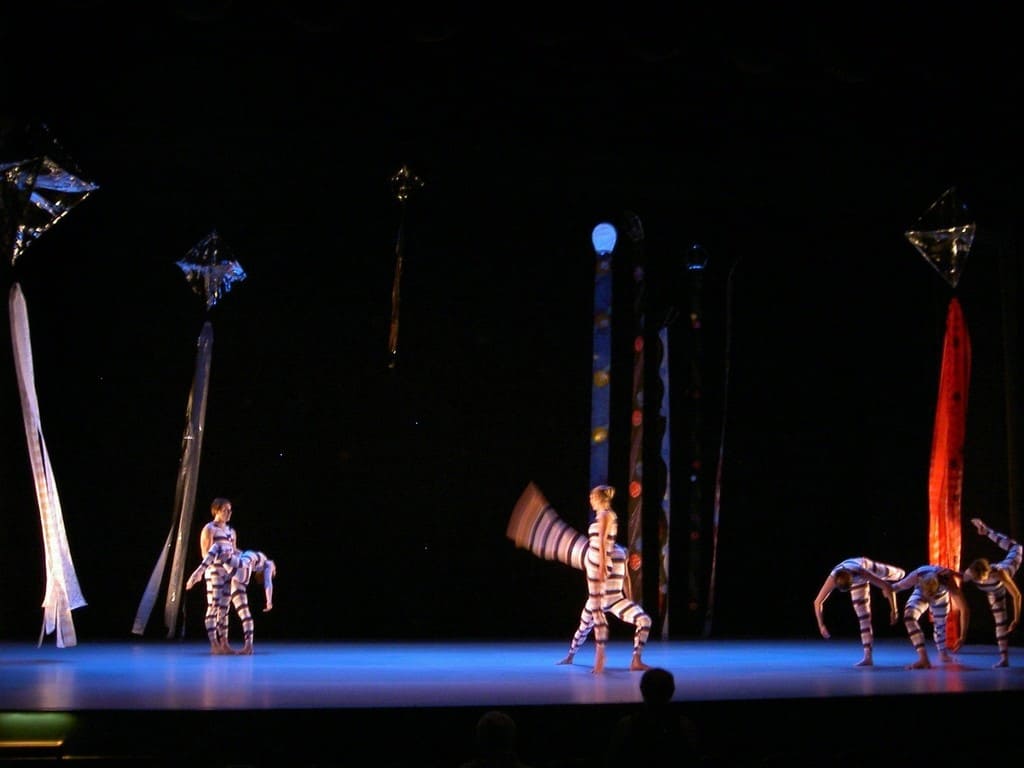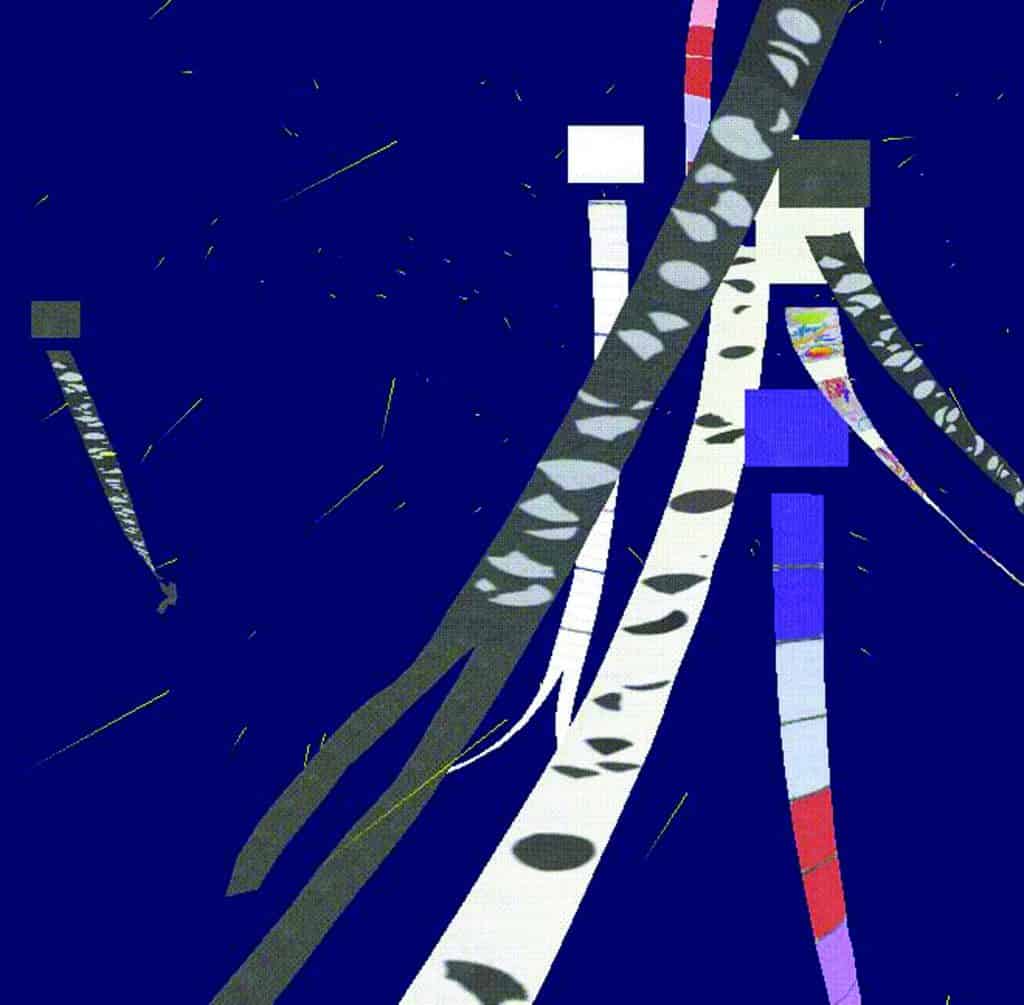Articles and Features
Artistic Collaborations: Jackie Matisse and the Art of Her Time
By Shira Wolfe
“I was interested in the art of my time.”
Jackie Matisse
Jackie Matisse passed away on 17 May 2021, at the age of 90. The granddaughter of Henri Matisse and the stepdaughter of Marcel Duchamp, she became known for her kite art, floating art, installations and assemblages. “I was interested in the art of my time,” she proclaimed in an interview in 2000, and no wonder, given the fact that some of her close relatives were among the most innovative and boundary-breaking artists of her time.
Early on, Jackie was already collaborating with Duchamp, and there would be many more inspiring artistic collaborations to come. We honour the legacy of Jackie Matisse by taking a look at her life and artistic collaborations.
The Life of Jackie Matisse
Jacqueline (Jackie) Matisse was born in Neuilly, near Paris, in 1931. Her father, Pierre Matisse, was a leading contemporary art dealer and owner of an art gallery in New York representing Henri Matisse as well as some of the top European artists of the time, such as Balthus, Marc Chagall, André Derain, Jean Dubuffet, Alberto Giacometti, Joan Miró (who was Jackie’s godfather) and Yves Tanguy. Jackie therefore grew up in an unusually rich artistic environment, splitting her time between Paris and New York. As a young girl, she was sketched and painted by numerous artists in her household and their circle.
In 1949, Jackie started studying Literature at the Sorbonne in Paris. That same year, her parents divorced, and her mother remarried none other than Marcel Duchamp in 1954. Duchamp was to become Jackie’s first true artistic collaborator.
Jackie Matisse and Duchamp
From 1959 to 1968, Jackie worked with Duchamp on the building of his new sequence of Boîte-en-valise: transportable miniature monographs with reproductions of Duchamp’s art. There were 150 of them in total. In a piece Jackie wrote on Duchamp for the Tate, she remembers: “They were very complicated because you had to put frames on the mini reproductions of his work. I had to fit it all exactly the way he had planned. He didn’t give many instructions about how to do it, so I had to use my good sense to assemble them.”
“My artistic activity enabled me to explore the elements and to indulge in my fascination with space, movement and chance, either in the air or below water. Watching and making the kites fly brought me a feeling of freedom, a means of collaborating with others and with nature, and an open door to the immensity of life through my vision.”
Jackie Matisse
Finding her Artistic Voice
Jackie’s work with Duchamp was a remarkable beginning, yet she was still in search of her own artistic voice, the one that would allow her to truly express herself. And then one day, in 1962, it hit her. She was taking a taxi from New York City to the airport and saw a kite flying above the Harlem rooftops. She saw it as a line that was drawn in the sky and became fascinated with the idea of making kites, using the sky as her personal canvas.

Jackie started creating kites and kite-like sculptures from cloth, paper and metal. Using motion, line and colour, she worked with the principles of fluidity and metamorphosis, sculpting air and water. She brought these signature works into her collaborations with other artists.
Jackie Matisse and David Tudor
In 1983, Jackie worked with pioneering composer and pianist David Tudor, a long-term collaborator of avant-garde artists like John Cage, Karlheinz Stockhausen and Merce Cunningham. Together with experimental filmmaker Molly Davies, they produced Sea Tails, a six-screen, three-channel video installation combining electronic music by David Tudor with footage by Molly Davies of Jackie’s kites moving through the ocean. The piece premiered at the Pompidou Centre in Paris, and Tudor later performed it live in various cities by manipulating the sounds at a mixing table. Jackie would continue to collaborate with Tudor on various installations in the 1980s and 1990s.

Jackie Matisse and Merce Cunningham
Jackie also worked with Merce Cunningham in 2004 on the stage decor for his dance performance Events. She created richly coloured 26-feet-high kites, evoking totemic figures interacting with the performers. Jackie experienced Cunningham’s performances like an explosion of body parts advancing and retreating on stage. Inspired by this, her kites, fluttering and floating, became almost like co-performers.
Jackie Matisse, Niki de Saint Phalle and Jean Tinguely
Jackie met Niki de Saint Phalle when they were still young, at school. Years later, they reconnected in France when Niki’s husband Jean Tinguely introduced them. When De Saint Phalle worked on her monumental project Tarot Garden (1979-2002) in Garavicchio, Italy, Jackie would also contribute creating alchemical glass containers for sacred waters. In Tinguely, Jackie also found a mentor. The influence of his motorised contraptions and kinetic sculptures can be seen in her mechanics to operate her kites indoors.

Legacy
Between 2002 and 2005, Jackie made collaboration an open-ended invitation to everyone with Kites Flying In and Out of Space (2002-2005). For this interactive work, Jackie and an international team of computer scientists devised technology that allowed anyone to fly simulated kites in virtual space.
Over the years, Jackie started creating hanging assemblages with moon shapes and found objects. She also made miniature kites bottled in water or air.
Today, she leaves behind a legacy – at once gentle and powerful – of floating and flying artworks that explore motion, form and materiality.
